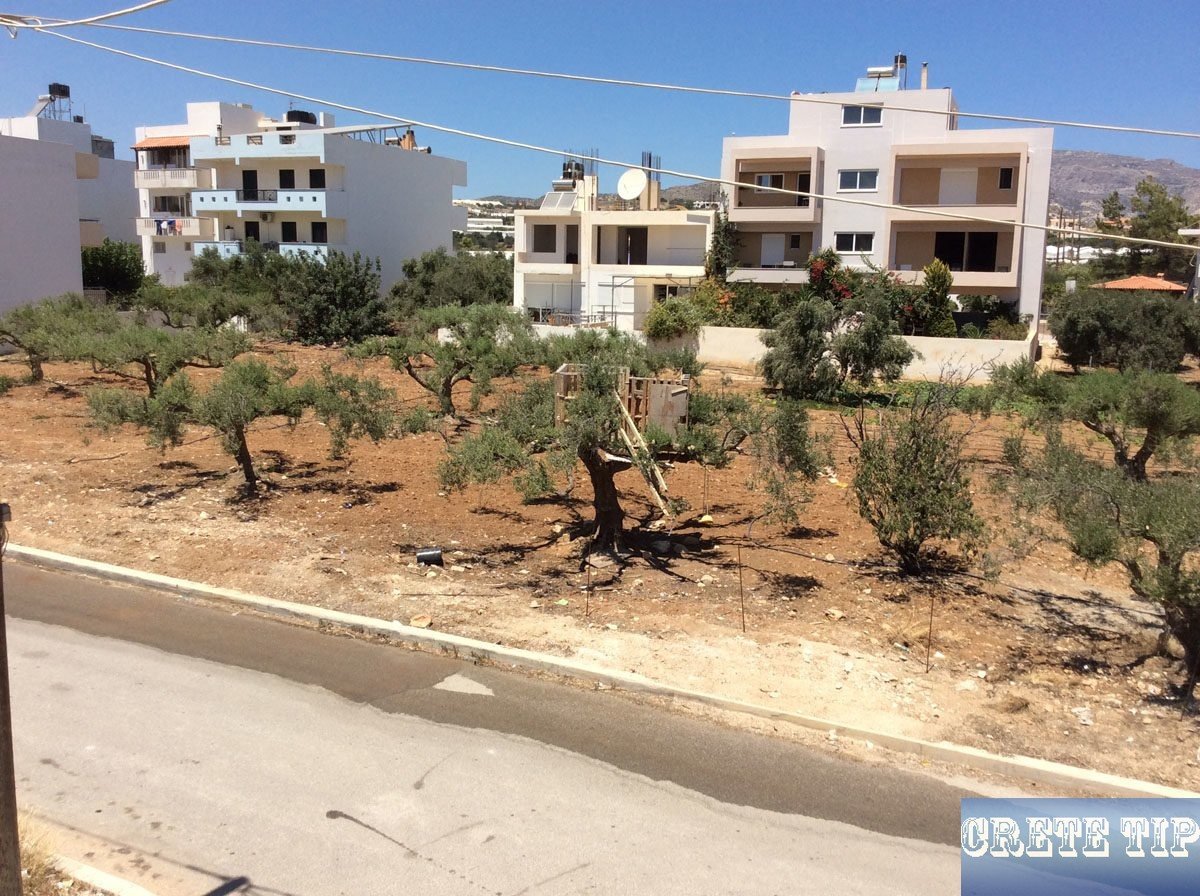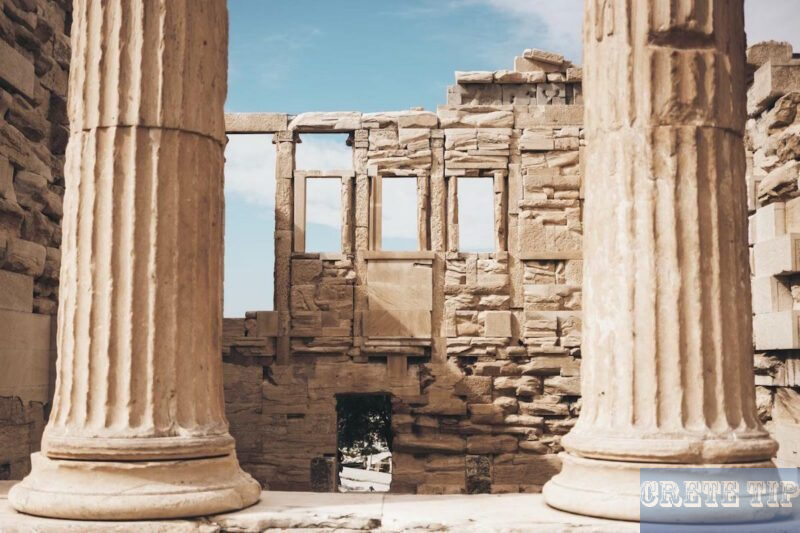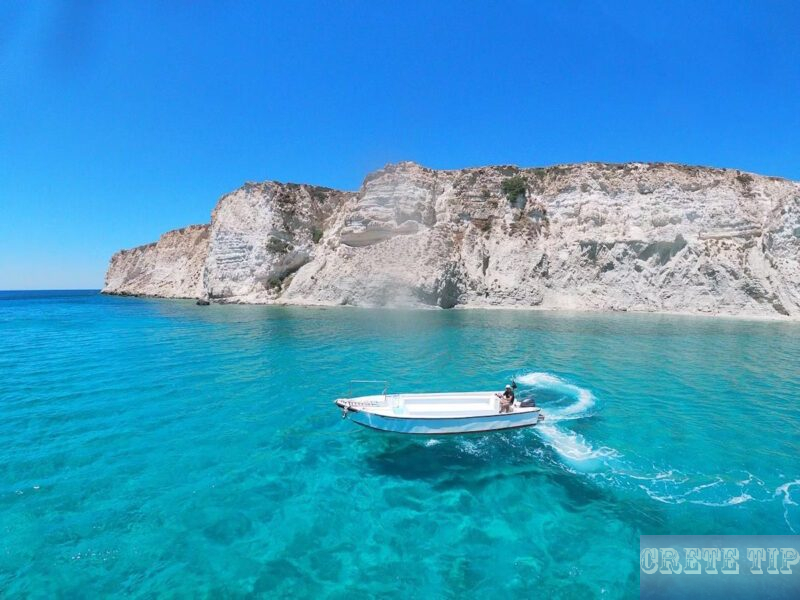Sufficient water from the Aposelemi dam for Heraklion only until February and the new projects and timetables for water supply in Crete.

Water shortage in the Aposelemi dam for Heraklion
Table of Contents
In recent weeks, parts of Crete have experienced a lack of rain that has raised concerns about water availability. Specifically, the municipalities of Heraklion and Lasithi are facing difficulties, as the water levels at the Aposelemi Dam are not rising sufficiently. This situation affects water supply, which has now diminished, to the areas served by the dam, including the municipalities of Heraklion, Hersonissos, and Agios Nikolaos.
The Heraklion Municipality currently meets about 85% of its water needs through around 60 active boreholes. The average daily water consumption in the city reaches approximately 60,000 cubic metres, resulting in an annual total of 20 million cubic metres. Meanwhile, the dam only supplies around 3.5 million cubic metres of water each year. Experts, including the President of the Heraklion Water Supply and Sewerage Company (DEYAH), have indicated that the water from the Aposelemi Reservoir will remain sufficient only until February.
As the days pass and the fear of drought looms for the upcoming summer, DEYAH is intensifying its efforts to find alternative solutions to cover the remaining 15% of water needs for Heraklion’s regions. The option of drilling new wells is on the table. However, each borehole can cost the municipality about €200,000, leading to a push towards utilising water from the Almyros River instead.
Conversations have already begun with officials from the Maleme municipality to explore the logistics of constructing a new pipeline. This pipeline would facilitate the desalination of water from the Almyros River and transport it to Heraklion’s central reservoirs.
A preliminary study is expected to reveal the total costs associated with this major pipeline project, including expenses for desalination and pricing per cubic metre of water. The optimistic outlook shared by the DEYAH president envisions that the project could be completed within a year, but the urgent requirement for funding remains critical to initiate the processes as soon as possible.
There are several key issues surrounding water distribution that are crucial to resolving the current challenges. The drought in the region complicates logistics, making it imperative to enhance both the quality and quantity of water supplied to citizens. Moreover, a detailed overview of water flow and any incidents of leaks is essential to maintain efficient use of the available resources.
Water Needs in Heraklion
To provide a clearer picture of current water usage, the main sources of supply and consumption can be outlined in the following table:
Source |
Annual Volume (cubic metres) |
Percentage of Total Supply |
|---|---|---|
Aposelemi Dam |
3,500,000 |
17.5% |
Active Boreholes |
16,500,000 |
82.5% |
Water Challenges
The ongoing shortage is not just a seasonal issue but touches on broader concerns such as infrastructure management and community reliance on a limited number of systems. Problems with water supply have previously occurred due to various factors, including:
- Heavy Demand: Summer tourism increases the pressure on existing supplies, often leading to shortages.
- Infrastructure Strain: Older systems may lead to leaks and inefficiencies in water distribution.
- Changing Climate: Unpredictable weather patterns further complicate rainfall predictions and water storage levels.
Efforts for Restoration
In terms of restoration, measures taken to secure the water supply include the exploration of diversification in water sources, including the increased focus on desalination. As communities revise their strategies, they must ensure plans are sustainable and can sustain a growing population and economic activity.
The use of innovative technologies for the monitoring of water quality may also play a role in addressing public health concerns linked to water scarcity. Regular assessments and adjustments to maintain quality control measures are essential to ensure the safety of the water provided to residents.
Further Considerations
In addition to the need for immediate responses to the current drought, the authorities have begun to consider long-term strategies for water management. These plans may involve greater investments in new technologies, more effective resource allocation, and community education on water conservation.
- Water Conservation Practices: Encouraging residents to adopt simple measures to reduce their consumption, such as fixing leaks and using water-efficient appliances.
- Community Engagement: Creating awareness programs that educate citizens about the importance of water resources and the current challenges faced.
New projects and timetables for water supply in Crete
The recent rains have provided a brief respite for the reservoirs and the water purification plant in Rethymno. According to the President of the Organisation for the Development of Crete, Thodoros Ninos, these weather conditions have allowed the land to absorb moisture effectively, leading to a boost in underground water sources. At the same time, the water level in Lake Kournas has increased by about 1.5 metres, rising from a historically low point of 2.46 metres to 3.90 metres. Although this rise indicates some improvement, it is still below expected statistical averages for this time of year.
Changes in Water Resource Management
In times past, approximately 80% of the water supplied to the Rethymno Water Supply Company (DEYAR) came from the springs at Argyroupoli, with the remaining 20% sourced from the rapid purification facility at Dramia, drawing water from Lake Kournas. However, the situation has drastically changed over the last two years, leading to a significant shift in the distribution of water resources. Currently, Argyroupoli contributes only around 36% of DEYAR’s supply, while Dramia now accounts for 44%. The remaining 20% is sourced from the Rivers Dam through three rapid purification facilities established by DEYAR. This evolution highlights the growing importance of the Rivers Dam and the ongoing concern regarding the disturbances to the natural water cycle.
Water Supply Projects in Progress
Several major projects aim to improve water supply and management across Crete. These initiatives have been prioritised based on their necessity and projected impact on the region’s water resources.
-
Construction of New Transport Pipeline: A new pipeline will transport water from the municipalities of Heraklion and Hersonissos to a purification facility at Apodselimi. The pipeline will span 16 kilometres, facilitating more efficient water transfer.
-
Upgrade of Existing Facilities: Existing purification systems will undergo enhancements to handle increased capacities and improve water quality. This is particularly crucial as demand for potable water rises.
-
Enhanced Rainwater Harvesting Systems: Efforts are also being made to implement rainwater harvesting solutions throughout urban areas. These systems can provide an alternative source of water, especially during dry spells.
Future Timelines and Expectations
The Organisation for the Development of Crete has set forth a timeline for these projects, expecting the integration of new water sources to be fully realised within two years. This involves not just the construction phases but also the testing and potential scaling of facilities to meet the region’s demands. The water from the new purification plant is anticipated to play a crucial role in stabilising the water supply during peak usage periods.
Community Impact and Awareness
The ongoing projects highlight the necessity of public engagement and awareness regarding water conservation. Residents of Crete are encouraged to understand their role in maintaining water resources and to participate in conservation initiatives. Community workshops and informational campaigns are planned to educate the public about efficient water use and the importance of supporting local projects.
The recent developments around the Rivers Dam are of particular significance, considering the prevailing challenges faced by other reservoirs in the region. By raising awareness and encouraging community participation, the Organisation aims to foster a proactive approach toward water management.
The installation of new systems and infrastructure reflects a comprehensive strategy to adapt to the changing environmental conditions. It aims to ensure a sustainable water supply for both present and future generations.
Economic Considerations
Investments in water infrastructure not only benefit the environment but also have positive economic implications. Improved water supply can drive agricultural productivity, tourism, and overall quality of life on the island. With stable water resources, agricultural producers can cultivate crops more reliably, and local businesses can thrive without the disruptions caused by water shortages.
The development projects are seen as critical tools for fostering economic resilience in Crete, particularly as climate patterns become less predictable. The government plans to integrate these initiatives into broader economic and social strategies, strengthening the island’s capacity to deal with future water-related challenges.
Strategic Partnerships
Furthermore, successful execution of these projects relies heavily on collaboration between various stakeholders. This includes local governments, environmental groups, and private entities. Joint efforts enhance project efficiency and effectiveness while promoting a shared responsibility for sustainable water management.
The Organisation for the Development of Crete has been actively seeking partnerships to pool resources and expertise. These alliances can lead to innovative solutions and best practices that ensure the longevity of Crete’s water resources while addressing the pressing needs of the populace.
Ongoing Monitoring and Evaluation
To maintain transparency and effectiveness, there will be ongoing monitoring and evaluation of the water projects. The Organisation is committed to regularly assessing the progress and making necessary adjustments to the strategies. This will ensure that projects remain aligned with both environmental and community needs.
Stakeholders will be kept informed about progress and any challenges faced during the implementation phases. This open line of communication will be vital for building trust and encouraging public involvement.
Conclusion
Robust actions towards improving water management showcase a strong proactive stance in addressing the unique climate challenges faced by Crete. By fostering innovation, community involvement, and strategic alliances, Crete positions itself to create a more resilient and sustainable water supply system, ensuring the health of its population and the environment for years to come. Implementing projects in a phased, informed manner will allow for adaptation and growth, setting a benchmark for effective water resource management in the broader region.
Frequently Asked Questions

What is the expected amount of water delivered from the Aposelemis Dam to Heraklion by February?
The anticipated volume of water transferred from the Aposelemis Dam to Heraklion by February has been a topic of discussion. Currently, the water supply is highly dependent on rainfall patterns. If the expected precipitation does not occur, the delivery could be lower than planned.
How does the operation of the Aposelemis Dam influence local water salinity?
The Aposelemis Dam plays a critical role in maintaining the salinity levels of local water sources. Proper management of water flow helps prevent saltwater intrusion, which can occur in coastal areas. This is particularly important for preserving the quality of freshwater resources in the region.
What strategies are implemented to promote the long-term sustainability of water from the Aposelemis Dam to Heraklion?
To ensure sustainability, various approaches are in place. These include monitoring water levels, regulating usage, and encouraging water conservation practices among residents. Additionally, infrastructure improvements are regularly assessed to enhance efficiency.
How has the transfer of water from the Aposelemis Dam affected farming in Heraklion?
The water supplied from the Aposelemis Dam has significantly supported agricultural practices in Heraklion. Farmers rely on this resource for irrigation, and consistent water delivery is crucial for crop yields. Any disruptions in supply can adversely affect agricultural output.
Are there any ecological concerns linked with the diversion of water from the Aposelemis Dam?
The diversion of water from the Aposelemis Dam does raise some environmental concerns. Potential issues include the alteration of local habitats and the impact on biodiversity. Ongoing assessments help address these concerns and aim to minimise negative effects.
What is the importance of the Aposelemis Dam in Crete’s water management plan?
The Aposelemis Dam is vital to Crete’s overall water management strategy. It is a key source for supplying freshwater to populated areas and agricultural lands. Moreover, it plays a significant role in balancing the regional water supply, supporting both human needs and environmental health.




